|
Second test
in making black tea
Dr Stephen and I returned to the vicinity of the old Mayang Tea
Plantation in his 4 X 4 wheel drive vehicle so that we are
better able to negotiate further up the gravel track than we
were able to walk on the first occasion 3 weeks previously. It
was just as well because the track certainly needs a 4-wheeled
drive plus it was raining quite heavily.
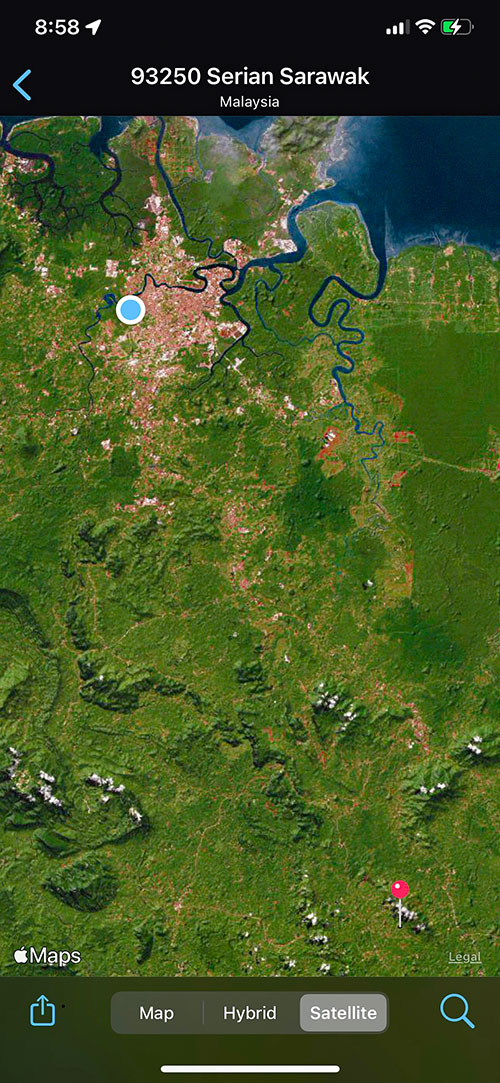
The blue dot is where I am located in
Kuching.
The red pin is the location of the tea site.
|
|
After
driving past the furthest point reached (Buni's farm) on our previous
trip, we constantly
scanned for tea bushes and eventually found a location with
several. We stopped and found the farmer on-site.
|
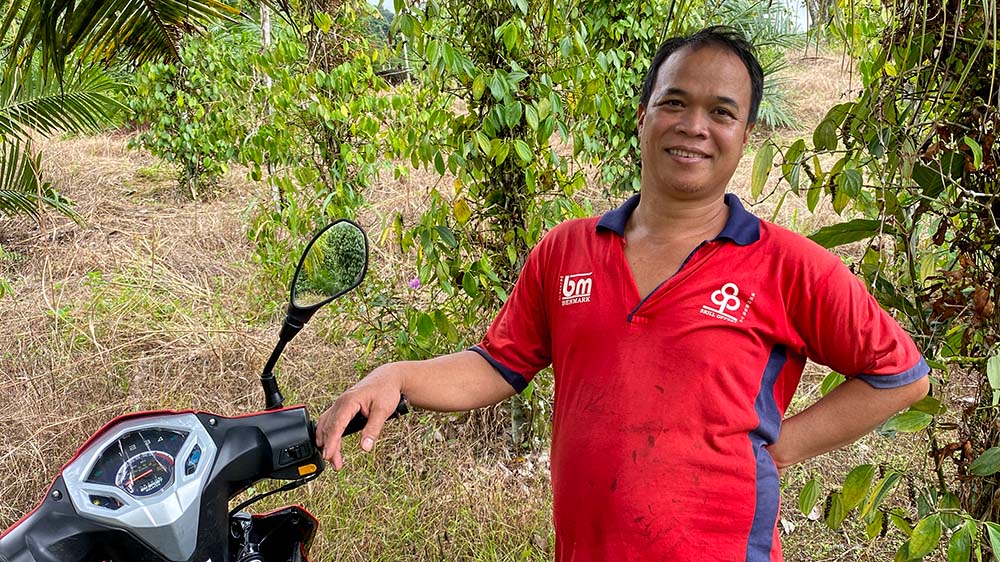 |
|
This is friendly Mr
Hercules Talen, the land owner of the site where we spotted some
tea bushes.
Hercules let us pick as much as we needed and even helped us cut
off some branches for us to pluck because the approaching heavy
rain soon put an end to our harvest. After Dr Stephen introduced
me, I was extremely surprised when he said that he knew of me
(right out there in the wildeness). They spoke in Bidayuh and it
was briefuly explained to me that Hercules recalls seeing my
name at a printing press which he was working for at
Pending, Kuching - small world!
The tea bushes are remnants from the old Mayang Tea Plantation
and have not been tended since the tea operation closed down
over a decade ago. Tea bushes in production are regularly
trimmed to height and to encourage flushes of new growth from
which the typical two-leaves and a bud shoots are picked for tea
making.
|
|
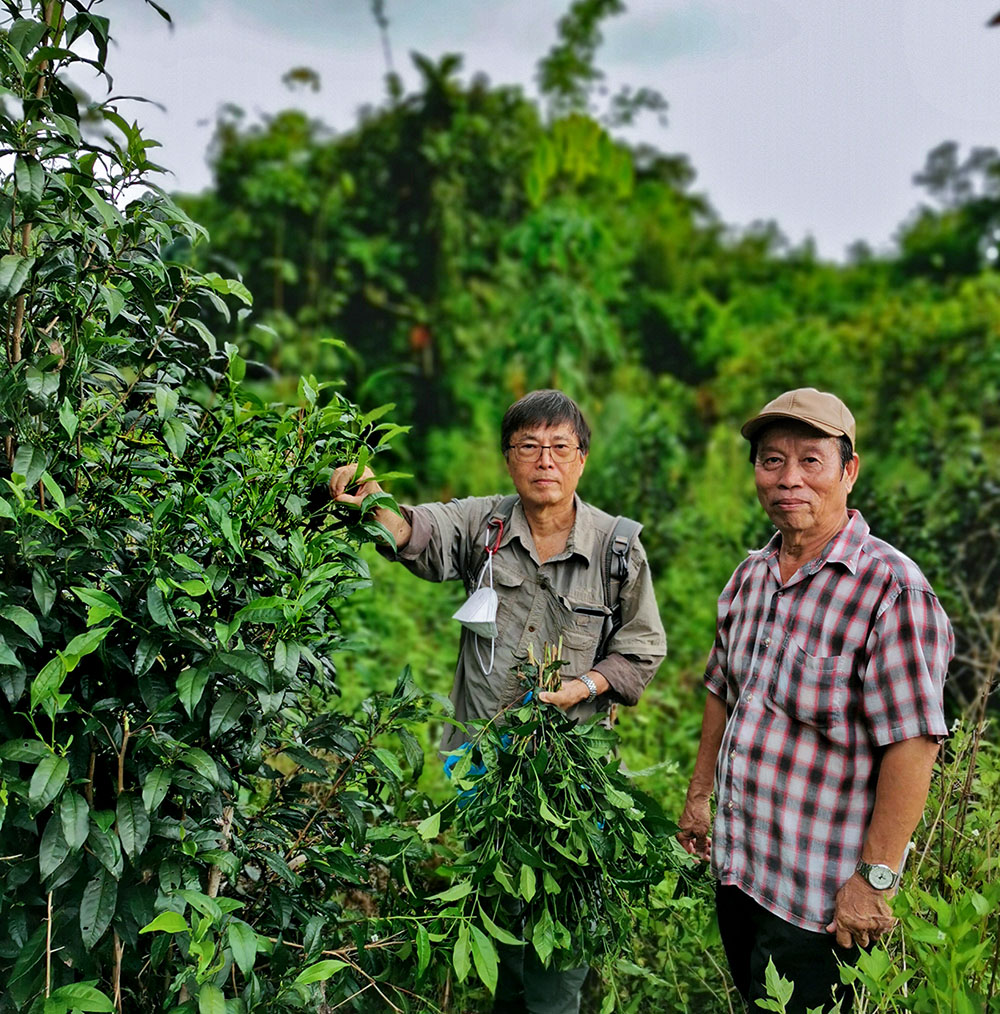
Dr Stephen and I beside one of the old Mayang tea bushes found
on Hercules' land.
From the height of the bush it can be seen that it has not been
tended for tea production for some time.
I am holding some branches cut for me by Hercules to pick shoots
from as a storm was fast approaching.
Plucking was curtailed by the storm before we could pick neither
select shoots nor sufficient quantity of them.
|
|
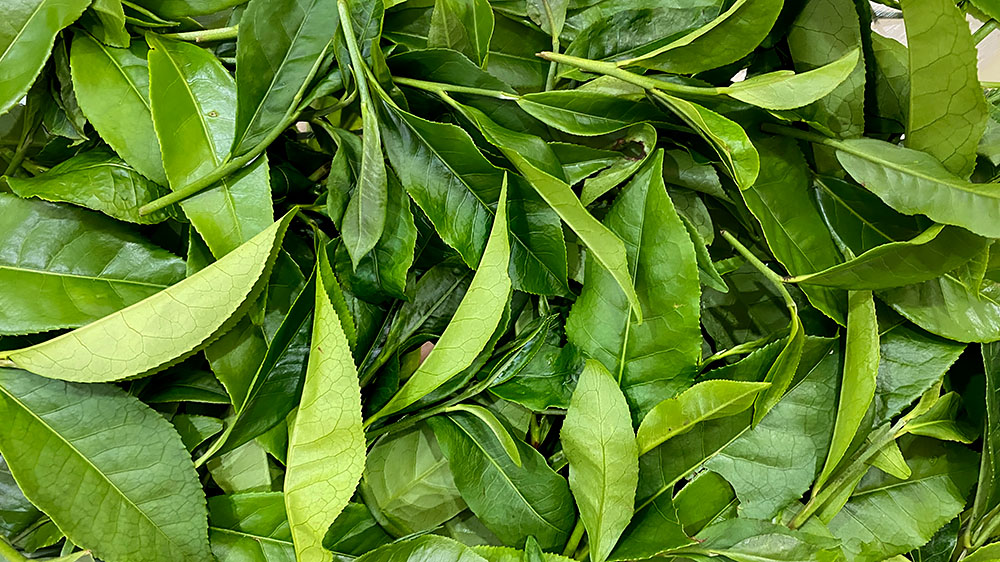
After arrival back in Kuching: What we were able to harvest
before the storm hit.
Only a fraction of the crop were shoots with two leaves and a bud, and some
leaves were too old.
|
|
The four
principal steps in making black tea are: withering;
rolling; oxidation; and drying.
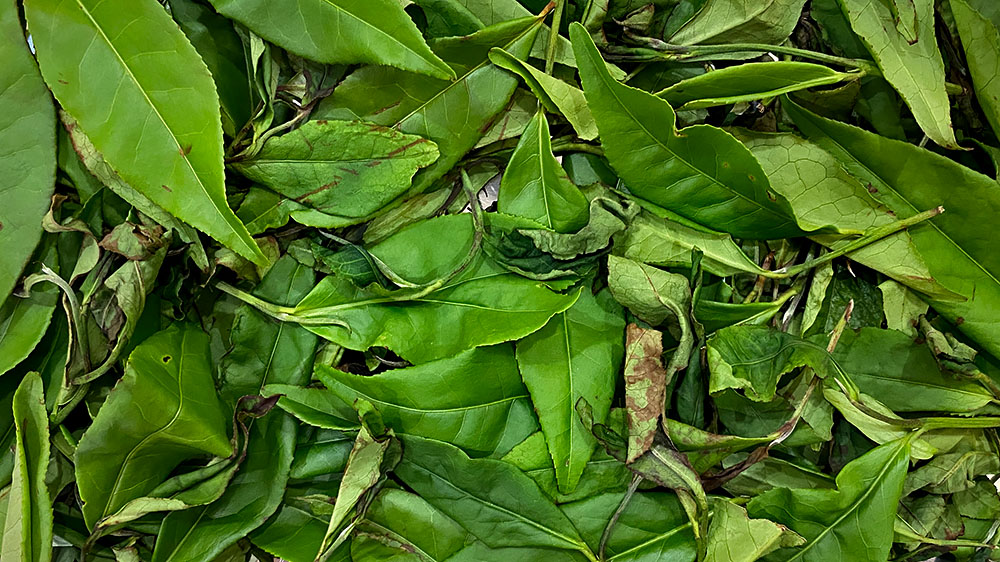
The leaves after some 18 hours of withering at room temperature.
|
|
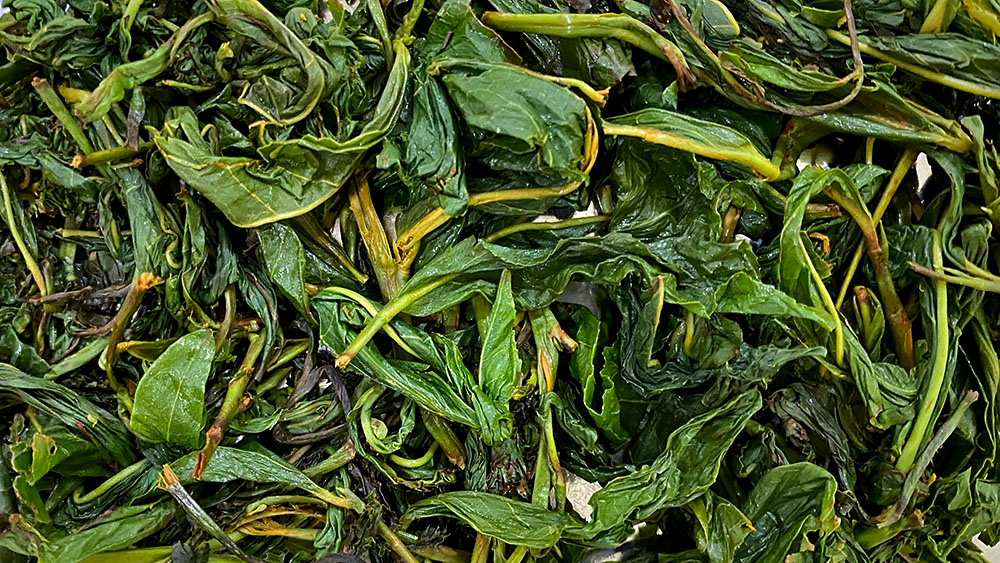
After withering, the leaves were hand rolled for some 30
minutes.
The leaves can be seen to be crushed and moist with cell exudate.
They were then left to oxidize at room temperature.
|
|
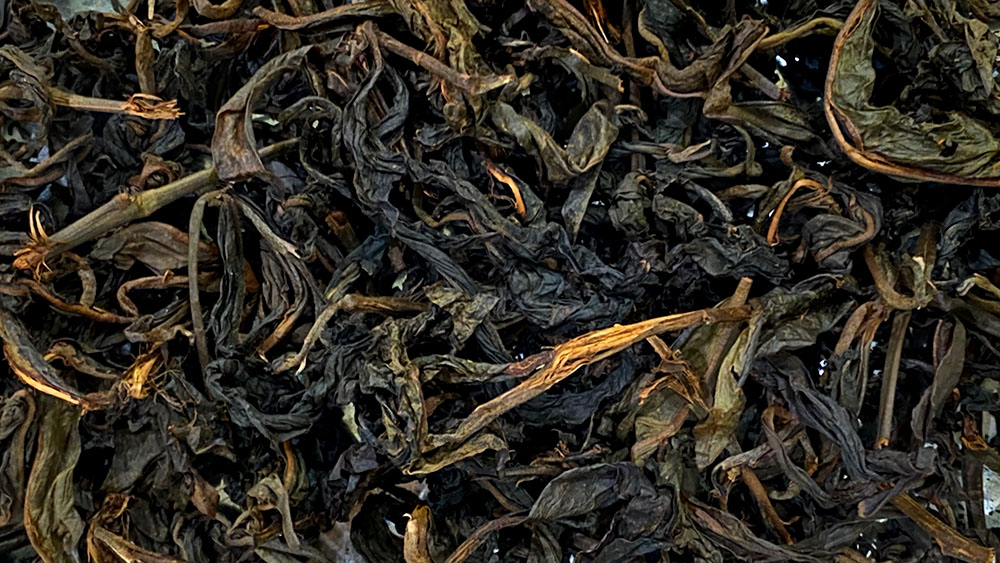
The batch after 18 h oxidation.
The leaves are dark in color with orange bits and are still limp
and moist although much drier than after rolling.
|
|
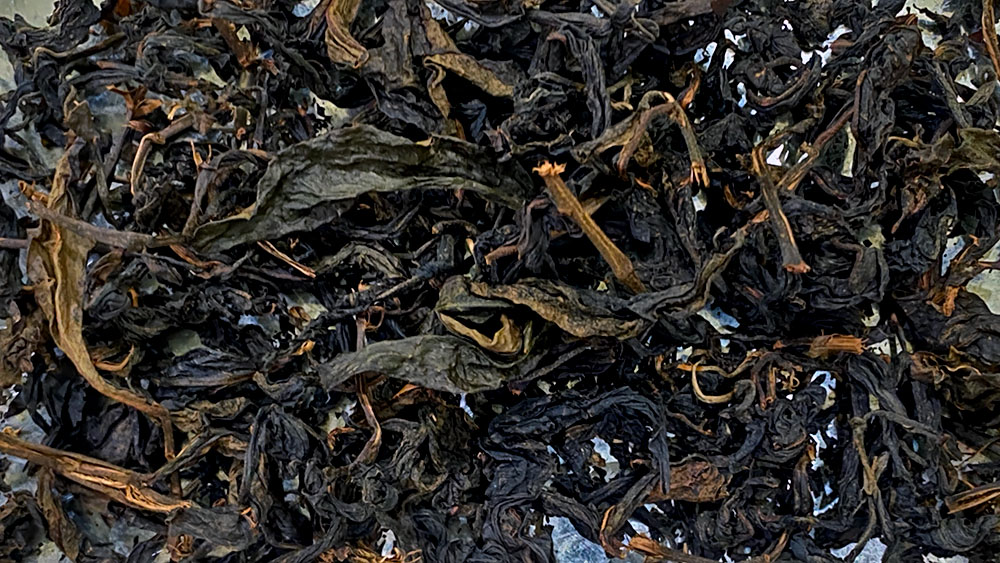
The batch after 2 h drying in the sun to stabilize the product.
The tea is dry and crispy at this stage.
|
|
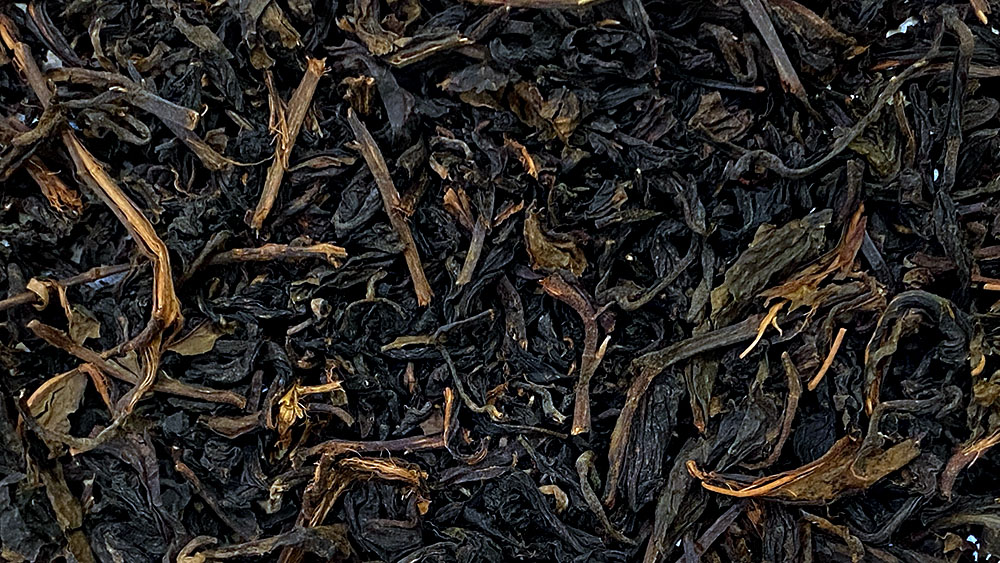
The batch after crushing into smaller pieces.
|
|
It is said that tea should be allowed to age after it is made.
The color and flavor profile will change with time if properly
stored against deterioration (moisture is the main threat).
Thus, my test brew was only done one day after the tea was dried
and crushed.
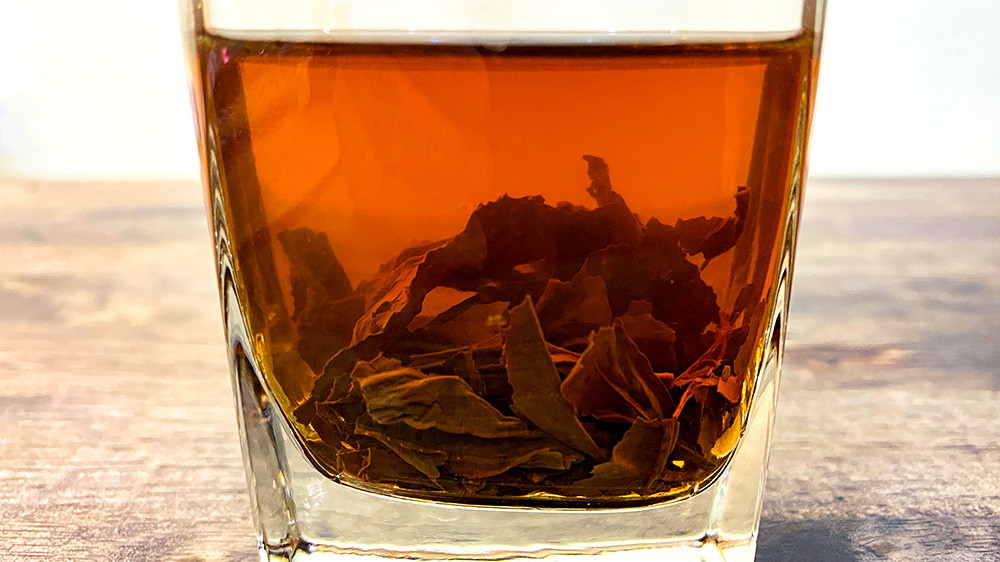
The test brew: Leaves steeped for 3 minutes in just boiled
water.
|
|
Verdict:
-
The deep amber color is
indicative of a the fact that rolling was more intense this
second test production and perhaps also because the leaves
were broken up after sun drying;
-
Taste-wise: Even
though rolling was more intense and oxidation appeared to
have proceeded further (darker colors resulted), there
is still a distinct grassy scent and taste of green tea
(different from a blended black breakfast tea); distinct fruit notes were present;
-
I did find that
using less tea leaves and a lower brew temperature around 80
- 90C, and not drinking with the tea leaves (remove them
after brewing time is up) reduced the grassy notes in the
nose and palate.
For next time:
-
A third attempt will only be made if
sufficient shoots with two-leaves and a bud can be picked.
-
It seems that even
more hand rolling is indicated because this attempt still
resulted in leaves which look fairly intact compared to
others.
-
After oxidization,
I would pick out the leaves which still look "greenish" (not
obviously oxidized) in the hope that this will reduce the
grassy note in the brew.
Tea can be highly
varied depending on the entire process used. The variables
include: variety of tea plant; age and type of shoots plucked;
how the rolling is done and for how long; the degree and
conditions of oxidation; and the drying. There is also the
probability that terroir (influence of the soil and
climate), makes for different teas e.g. highland versus
low teas; Yunnan versus Assam versus Darjeeling teas. But, the
ability to make your own teas and the variability imparted by
the process make for fun in anticipating what kind of flavor
results from one's own homemade tea. |









